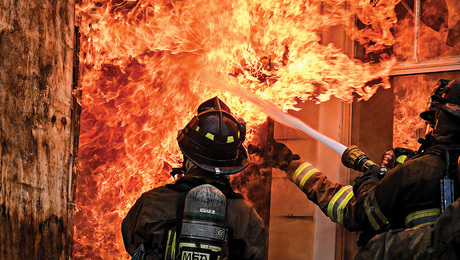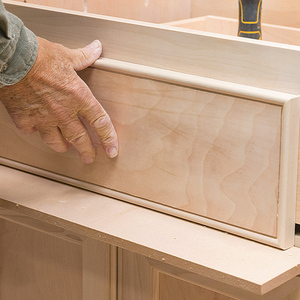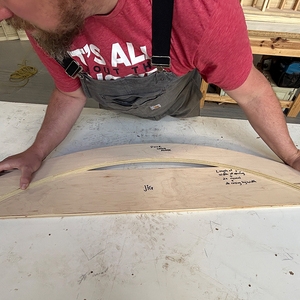Primer before texture, is it nesesary??
Basically I have been doing the standard three coats of mud and sanding, then 1 coat of PVA primer, then covering the wall with thinned topping mud to do a skip trawl texture, then prime again. My question is: Since my last two coats of mud are with topping mud, do I really need to primer then texture then primer again? Seems like overkill. The result looks great, I just think I am wasting my time.



















Replies
I never primer before texture. Just dust the walls good before skip trowel.
http://www.youtube.com/watch?v=fd3eJTDtoxs
Hope this is a useful question and not a hijack.
Do you ever roll on a thinned skim coat before texturizing it? I was workin on our kitchen ceiling this weekend and was trying a roll on texture process I read about here with a 3/4 nap roller and premixed mud. Oh, yeah, I'd completely removed the old popcorn (doesn't it look more like cottage cheese?) so that all was left was exposed dw paper, old 1982 joint compound and a few new spots I'd patched with hot mud.
Anyway, I'd gotten half the ceiling pretty well covered and went back (5 minutes later) to make a 2nd pass to level out the coat ... and the mud from 1982 started falling out of the joints in sheets ... some of it taking the tape with it.
yuck.
Stopped right there and scraped it all off so I can patch, prime and start over. Looked for Zinsser Gardz but only found the 1-2-3, so I'll test with that first. Got a 3-month old at home, so low VOCs is a must.
Ever have a problem like this on old work, or new work? I didn't get to my hot mud patches before I put the process in reverse, so I don't know if they were gonna come loose or not. Is hot mud better in this case, or will I still have problems? Any comments, suggestions?
Never encountered that problem. Hot or regular mud, I'd use regular or spike it with hot mud. I'm a big believer in the bonding power of regular joint compound (ever try to pry a dry chunk loose from something it dried on?) if the surface is relatively clean and dry. I do mix in hot mud sometimes to accelerate drying.View Image bakersfieldremodel.com
Over kill since its new work .
We do it on our jobs, but primarily because it is spec'ed that way and also in the manufacturers guidelines. I have never seen a failure w/o primering first though.
Mike
Small wheel turn by the fire and rod, big wheel turn by the grace of god.
Never heard of primer before the texture. I've talked w/ a number of drywallers and they never mentioned it. They textured mine and then I primered. Done.
I finishe my drywall & primered, then called in a guy to texture and do a knock down.
He complained that I primed first.
Mainly because it slowed down the dry time on the texture to before the knock down.
They had to wait for the texture to be ready. They said they have never seen it that way.
In another part of the house had a two tone knock down done to the ceiling.
Finished, primed & painted a color. Then drywall guys mixed up the texture and added another color paint to the batch, sprayed, knocked downed, done.
looked great, two colors and a texture!! Wife loved it, that's all the mattered!
With the primer you will probably have more open time with it because the moisture wouldn't be sucked out as fast.
There also might be more of an un-eveness between the drywall papered area and the mudded area.
Will Rogers
With the primer you will probably have more open time with it because the moisture wouldn't be sucked out as fast. There also might be more of an un-eveness between the drywall papered area and the mudded area.
I don't use primer first, never have, don't believe in it. But I do agree that everything you said is true! Probably moreso with a knock-down texture, less so with skip-trowel. I just make sure I adjust my technique and timing accordingly.View Image bakersfieldremodel.com
Since you are right in front of it there's no reason someone couldn't adjust as they go. It's hand work. Adjusting is part of it."There are three kinds of men: The one that learns by reading, the few who learn by observation and the rest of them have to pee on the electric fence for themselves."Will Rogers